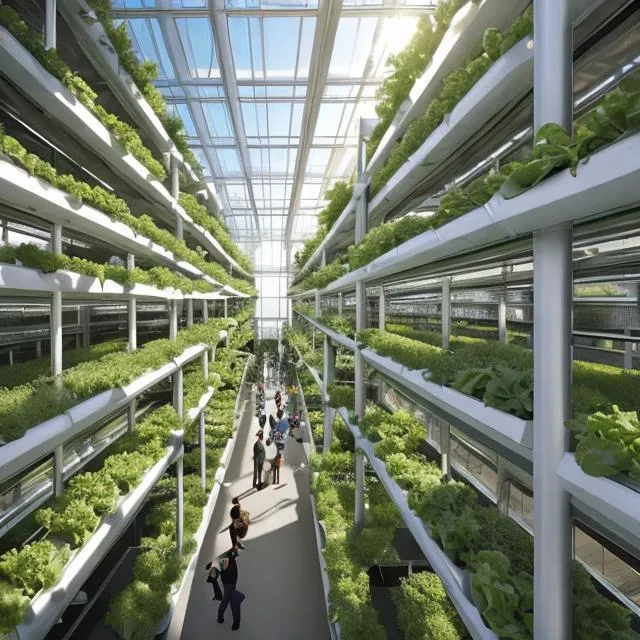
Unlocking the Potential of Vertical Farming for a Sustainable Food Future
The world is changing at an unprecedented pace. Global populations are soaring, urban landscapes are expanding, and the ever-present specter of climate change continues to challenge traditional agricultural methods. For those interested in the future of food, the picture can look pretty grim. But wait, let's sprinkle a dash of optimism here, shall we? Welcome to the world of vertical farming, a technological marvel poised to revolutionize food production.
Why Vertical Farming?
Why should we be excited about crops growing on stacks of shelves? To start, it tackles the looming challenges of land scarcity and deforestation. By taking agriculture into three-dimensional space, vertical farming maximizes crop yield per square foot. Moreover, it provides an answer to the unreliability of weather-dependent traditional farming. In a controlled environment, every day is a good day for farming.
The Science and Tech
Vertical farming is not simply about putting soil on shelves. Innovations in hydroponics, aeroponics, and aquaponics, combined with LED lighting systems that mimic natural sunlight, have made it more energy-efficient and productive than ever. Smart tech can monitor plant health, automate harvesting, and even predict crop yields, making it a data-driven form of agriculture.
Local and Fresh
By situating vertical farms near urban centers, produce is just a hop, skip, and a jump away from your local grocery aisle or even your doorstep. Say goodbye to wilted lettuce that's traveled thousands of miles; hello to crisp, fresh greens harvested just hours ago.
Sustainability, Served
Vertical farms use up to 70% less water than traditional farming. Plus, the controlled environment means less need for pesticides, reducing the chemical runoff that pollutes our waters. If that doesn't tickle your green taste buds, consider this: localized farming slashes the carbon emissions linked to long-haul transportation of goods.
But Wait, Isn’t It Expensive?
Initially, yes. Setting up a vertical farm requires an investment in specialized equipment. However, the long-term gains in efficiency, coupled with the potential for year-round farming, make it an attractive prospect for the future.
Practical Steps for Adoption
1. Start Small: Before converting an entire warehouse, try a small-scale setup.
2. Seek Expertise: Consult with agricultural scientists or vertical farming experts to maximize yield and efficiency.
3. Fund Wisely: Look into grants or partnerships for initial funding.
4. Scale Up: As you learn the ropes, begin to scale your operations.
The Final Harvest
Vertical farming is not just a futuristic concept; it's a viable solution to real-world problems. As with any technology, there are challenges to overcome. But the potential benefits—sustainability, efficiency, and local production—make it an incredibly promising avenue for feeding our growing global community.
Let’s Grow Up, Shall We?
Vertical farming presents an uplifting vision of the future, where technology and agriculture walk hand-in-hand towards sustainability. It's a future that we can begin building now, one vertical farm at a time.




